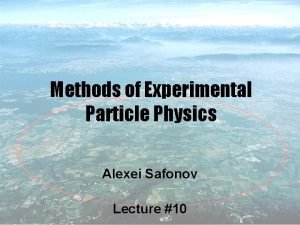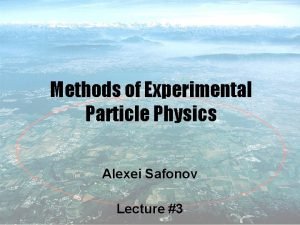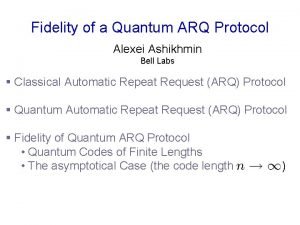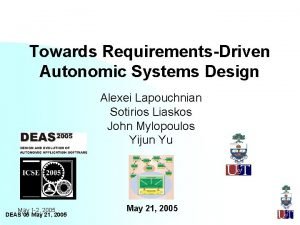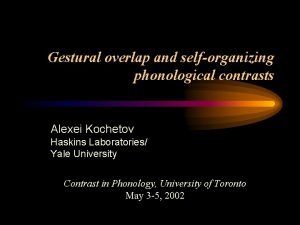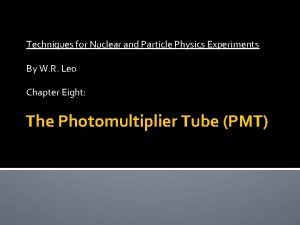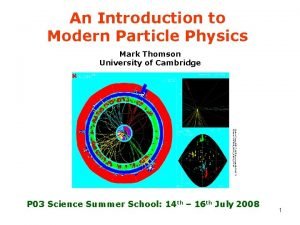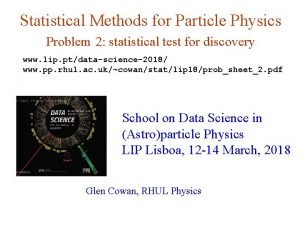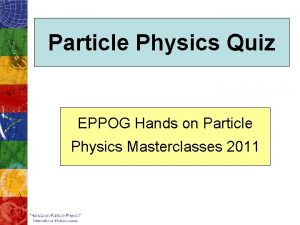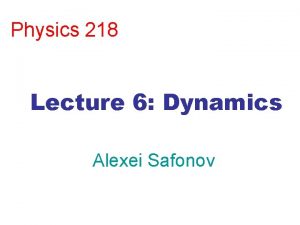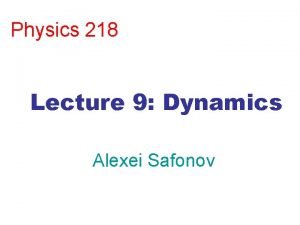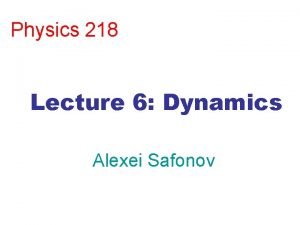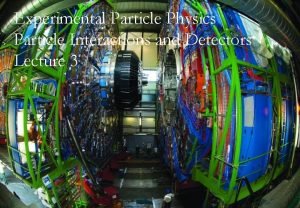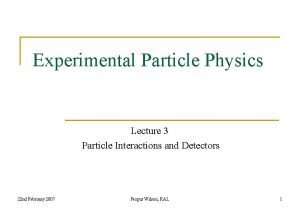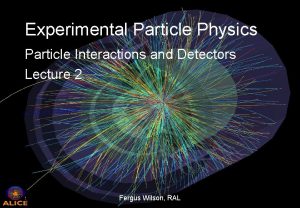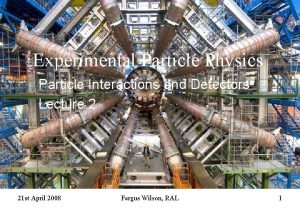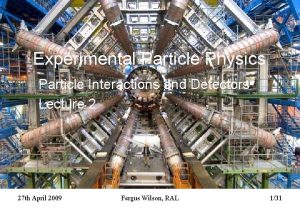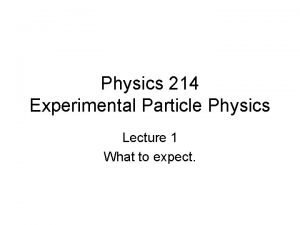Methods of Experimental Particle Physics Alexei Safonov Lecture


















- Slides: 18

Methods of Experimental Particle Physics Alexei Safonov Lecture #3 1

Calculations in HEP • Last time we wrote down Feynman rules for QED • Today we will calculate the e+e- -> e+ecross section • Your homework would be to calculate ee ee scattering cross section • The calculation requires some mathematical manipulations, which you should do at least once • It’s okay to use literature and help, but I want you to get through the entire calculation 2

QED Lagrangian and Feyman Rules • Needed to calculate the amplitude M, which tells you what is the probability of the interaction you wrote with the diagrams 3

Scattering Matrix • S is essentially probability amplitude for states on the left to transition to states on the right • Includes two options: nothing happens (they fly by) or they interact • In our calculations, we usually want to know the probability of something specific happening so we calculate M 4

Particle Decays • Simplest interaction is particle decay • Width G encompasses the probability that particle will decay • d. F is the “phase space” for each final state particle • Lifetime t=1/G • Survival probability: • Can also calculate partial widths G=G 1+G 2+… 5

Particle Scattering Cross-Section • Also very important in high energy physics • Imagine you are colliding two beams of particles A and B, each beam has: • • Number of particles NA and NB lengths l(A) and l(B) cross-section area A Density r(A) and r(B) • Cross-section is used to calculate the probability of scattering • Units are cm 2 • At colliders, often use “luminosity” L 6

Particle Scattering Cross-Section • Cross-section can be differential: • You may want to know not just the probability of any scattering, you want to know how often particles fly in a particular direction • Can calculate if you know M 7

Bhabha Scattering • Lorentz-Invariant Mandelstam variables: 8

Amplitude Calculation • Scattering and annihilation diagrams: • Note that we need to average over electron/positron polarizations 9

Amplitude Squared 10

Scattering Term 11

Summation over polarizations • Tr stands for the regular matrix trace • Next use completeness relations: 12

Summation over polarizations • Now use properties of traces for gamma matrices: • • • and trace of odd number =0 13

Summation over polarizations • Assuming we deal with a high energy scattering, drop m terms: • • • But this is only the scattering term, need to calculate three other terms 14

• Annihilation term: • Adding the interference term to scattering and annihilation terms: 15

Bhabha Differential Cross-Section • Tells you the distribution of probabilities for different scatter directions of the particle: • We assumed the incoming come along z direction 16

References • S-matrix in scattering: • http: //en. wikipedia. org/wiki/S-matrix • Feynman rules and calculations in QED: • Peskin, Schroeder, “An Introduction to Quantum Field Theory”, sections 3, 4, 5 • Brief review of cross-section and decay width calculations: • http: //pdg. lbl. gov/2012/reviews/rpp 2012 -rev-kinematics. pdf • (The link is section 43 of the PDG book) • Calculation of the e+e- scattering cross-section: • http: //en. wikipedia. org/wiki/Bhabha_scattering • http: //www. physics. usu. edu/Wheeler/QFT/Pics. II/QFT 10 Mar 05 Bh abha. pdf 17

Near future • Renormalization and running coupling constants in QED • Weal interactions and coming to the Standard Model • Standard Model Lagrangian • Start talking about Higgs 18
 Alexei safonov
Alexei safonov Alexei safonov
Alexei safonov Alexei safonov
Alexei safonov Experimental vs non experimental
Experimental vs non experimental What are the 5 types of non experimental research design
What are the 5 types of non experimental research design Disadvantages of experimental research
Disadvantages of experimental research Experimental vs nonexperimental research
Experimental vs nonexperimental research Nonexperimental study
Nonexperimental study Alexei korb
Alexei korb Alexei ashikhmin
Alexei ashikhmin Chronpos
Chronpos Alexei lapouchnian
Alexei lapouchnian Alexei kochetov
Alexei kochetov Alexei (alyosha) efros
Alexei (alyosha) efros 01:640:244 lecture notes - lecture 15: plat, idah, farad
01:640:244 lecture notes - lecture 15: plat, idah, farad Pmt particle physics
Pmt particle physics Mark thomson modern particle physics
Mark thomson modern particle physics Particle physics
Particle physics Particle physics practice quiz
Particle physics practice quiz

